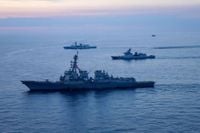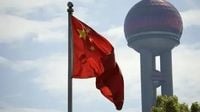On November 3, 2025, the Philippines and Canada took a major step in deepening their defense relationship by signing a Status of Visiting Forces Agreement (SOVFA) in Makati City. The pact, inked by Philippine Defense Secretary Gilberto Teodoro and Canadian Defense Minister David McGuinty, marks a significant expansion of Manila’s defense ties amid escalating tensions with China in the South China Sea.
This agreement enables the armed forces of both countries to deploy troops, conduct joint training, and coordinate more closely on military matters. It also removes many of the bureaucratic hurdles that previously hampered rapid deployments and joint exercises between the two nations. As noted by the Canadian government, the SOVFA “marks a new chapter in Canada-Philippines defense cooperation, enabling greater engagement, cooperation, and collaboration between both nations.”
For the Philippines, this is the fifth such agreement, following similar pacts with the United States, Australia, Japan, and New Zealand. For Canada, it represents the first time it has entered into such an arrangement in the Asia-Pacific region—a clear sign of its growing strategic interest in the region’s security architecture.
The timing of the agreement is no coincidence. Over the past several years, China has ramped up its presence and assertiveness in the South China Sea, claiming sovereignty over almost the entire area. This claim directly conflicts with the Philippines and several other Southeast Asian nations. According to Newsweek, Beijing has even ejected Filipino fishermen from their traditional waters and used water cannons and ramming maneuvers against Philippine vessels. China’s unilateral declaration of a “nature reserve” over much of Scarborough Shoal—a feature within the Philippines’ exclusive economic zone—has further heightened tensions, drawing strong protests from Manila, Washington, and other U.S. allies.
During the signing ceremony, Defense Secretary Teodoro described the SOVFA as “one of the most important projections of trust and confidence between nations.” He emphasized that the agreement would allow the armed forces and defense establishments of both countries to “work together not only bilaterally but with other like-minded partners to preserve and enforce peace and stability, to deter instability.” According to ABS-CBN, Teodoro also highlighted the strategic value of the pact, stating it would expand cooperation in “critical areas such as maritime security, humanitarian assistance, disaster response, and cyber defense capability.”
Canadian Defense Minister McGuinty echoed these sentiments, announcing Ottawa’s commitment to maintaining a “persistent naval presence of three Canadian ships in the region each year.” He noted that Canadian naval vessels had made nine port calls to the Philippines over the past three years, underscoring Canada’s growing operational footprint in the Indo-Pacific.
But the Philippines’ expanding network of defense partners is not just about bilateral ties. Over the weekend leading up to the signing, Teodoro met with defense chiefs from the United States, Australia, and Japan in Malaysia, voicing support for the creation of an Indo-Pacific Chiefs of Defense Cooperation Council. Just a day before the SOVFA signing, Teodoro and U.S. Secretary of War Pete Hegseth announced the formation of Task Force Philippines—a jointly staffed unit aimed at further enhancing maritime security and boosting interoperability between the U.S. and Philippine armed forces. As Hegseth put it, the goal is to “decisively respond to crisis or aggression and reestablish deterrence in the South China Sea.”
Regional security has become a weekly headline. In late October 2025, Australia, New Zealand, and the United States participated in a “multilateral maritime cooperative activity” in the eastern South China Sea, part of a growing trend of joint patrols designed to address common maritime challenges and underscore a shared commitment to the rules-based international order. The South China Sea disputes were also front and center at the 12th ASEAN Defense Ministers’ Meeting Plus (ADMM-Plus) held in Malaysia in early November, with U.S. officials criticizing China’s “destabilizing actions.”
China’s response to the Canada-Philippines pact was swift and pointed. On November 4, 2025, Foreign Ministry spokeswoman Mao Ning told reporters in Beijing that “defense partnerships should not be directed at any third party or infringe upon others’ interests.” She warned that “flexing military muscle and provoking confrontation are not conducive to regional peace and stability.” These comments reflect Beijing’s concern that the growing web of defense agreements in Southeast Asia is aimed squarely at countering its influence.
Philippine officials have not shied away from naming China as the primary driver behind these new alliances. Teodoro has accused China of “seeking to extend its reach far beyond its borders,” urging Beijing to “withdraw from the West Philippine Sea.” Canada, too, has taken a public stand. Following a confrontation at Scarborough Shoal in September 2025, Ottawa criticized the China Coast Guard’s “dangerous use of water cannons” and said it “strongly opposes China’s aggressive actions in the South China Sea.” David Hartman, Canada’s ambassador to the Philippines, has previously described China’s actions as “provocative and unlawful.”
The SOVFA also opens the door for Canada to participate in more complex joint military exercises, such as Sama Sama, a U.S. and Philippine-led naval exercise it joined in October. According to Newsweek, Canada is among several U.S. allies maintaining a regular presence in the Indo-Pacific, a region increasingly defined by strategic competition and maritime disputes.
For President Ferdinand Marcos Jr., who must ratify the agreement with the approval of the Philippine Senate before it can go into effect, the SOVFA is a key piece of a broader strategy. Since taking office in 2022, Marcos has moved to repair and extend the Philippines’ security relationships, particularly with the U.S., while deepening maritime cooperation with Japan, Australia, and now Canada. Analysts like Andrea Chloe Wong of the Institute for Indo-Pacific Affairs note that as the Philippines awaits more robust action from multilateral organizations, it will “continue to focus on bilateral defense cooperation with states that have converging security interests.”
Despite China’s warnings, the momentum toward closer military cooperation in the region appears unstoppable. The Philippines’ Defense Secretary summed up the rationale succinctly: the SOVFA will help “preserve the rules-based international order” and “resist attempts to redefine the norms for the selfish advantage of powerful countries.” In the current climate, with tensions in the South China Sea showing no sign of abating, such agreements are likely to become even more common as like-minded nations band together to bolster their collective security.
As the ink dries on the Canada-Philippines SOVFA, all eyes are now on how Beijing will respond—and whether the region’s fragile peace can be maintained as defense ties tighten across the Indo-Pacific.

